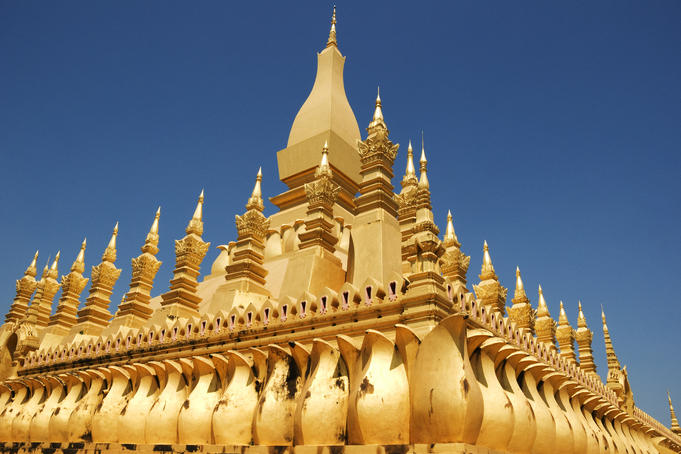 One of the countries that is yet to really embrace the tourism industry is Laos, and without some of the stunning beaches of its coastal neighbors it doesn’t enjoy the same attraction for those who love to relax on golden sands. However, this is certainly not to say that this hilly country isn’t beautiful, and it still has a tourism industry that is growing, particularly through the capital city Vientiane. Laos may have a troubled history, but with an improving political stability that is shared across much of the region, Laos is a destination that is starting to reveal its treasures to the tourism industry.
One of the countries that is yet to really embrace the tourism industry is Laos, and without some of the stunning beaches of its coastal neighbors it doesn’t enjoy the same attraction for those who love to relax on golden sands. However, this is certainly not to say that this hilly country isn’t beautiful, and it still has a tourism industry that is growing, particularly through the capital city Vientiane. Laos may have a troubled history, but with an improving political stability that is shared across much of the region, Laos is a destination that is starting to reveal its treasures to the tourism industry.
Vientiane
As the capital city of Laos, Vientiane is an important economic hub that is located on the banks of the Mekong river, with a population of close to three quarters of a million. The city itself has a long and colorful history, having in its time been occupied by the Japanese, the French and the Siamese, but is today the seat of government.
For visitors to the city there are a number of historic sites to visit, including Pha That Luang, which is a large stupa fronting on to a large open square that is famed for its ornate surroundings and gold color. The stone statues at the BuddhaPark and the LaoNationalMuseum are also both worth visiting, while it can also boast one of three bowling alleys in the whole of the country!
The Plain Of Jars
The Plain of Jars is a name that has been given to close to a hundred sites to be found across Xieng Khouang province, with each site including up to four hundred large stone jars. These sites are believed to date from between 500BC to 500AD, and each jar is at least a meter in height, with the largest jars three meters tall. All but one of the jars are undecorated, but only a few of these jars have actually had their lids recovered.
The mystery of the Plain of Jars is one that has triggered significant debate about the purpose of the jars, with some historians having found remnants of bone suggesting that they may have been for burning the bodies of the dead. Local legends for these jars are much more colorful suggesting that they have either been left by a race of giants that used to live in the region, or that they were created by a thirsty ancient king who used these jars to brew vast amounts of rice wine to slake his thirst.
Champasak
The town of Champasak was once home to the ruling dynasty of the Kingdom of Champasak, but is particularly noted for visitors to Laos because of the proximity of the ruined Wat Phu temple. The temple complex has been on the location for around 1,500 years, but the ruins to be found there currently date from between the eleventh and the thirteenth century. The site is still a location for Theravada Buddhist worship, which takes place alongside the significant conservation efforts being made to maintain the temple.
Luang Prabang
This small city is to be found in the north central area of Laos, and like many of the settlements in the country has been the seat of a Kingdom historically. Until the rise of the Khmer Rouge, it was also the capital of Laos, and has been recognized by UNESCO due to its range of historic buildings. The HawKhamRoyalPalaceMuseum is a particular highlight with a number of wonderful buildings, on a location that has been chosen so that visiting dignitaries could immediately enter the palace after disembarking from their river craft.
For those craving a site of natural beauty, the nearby Kuang Si waterfalls are set in a wonderful area of forest, and are a particularly popular site to relax for visitors.
Vang Vieng
For those looking for a little more excitement from their visit to Laos, the town of Vang Vieng has developed a reputation as a hot spot for backpackers and younger visitors to the country. The Nam Song river is used for kayaking and riding in tire inner tubes, while there are also a number of rope swings and zip lines in place for those looking for a thrill. Due to its popularity among teenagers and younger people, the town has a range of internet cafes, restaurants and bars, which has led some critics to claim it is losing its native culture.